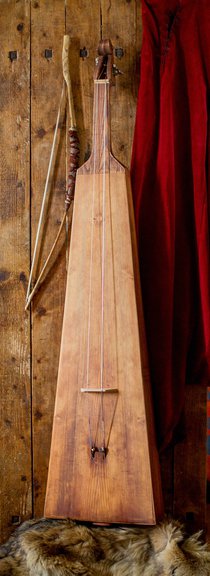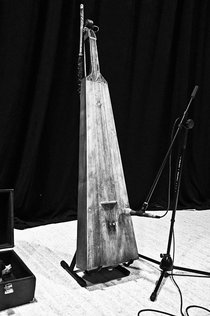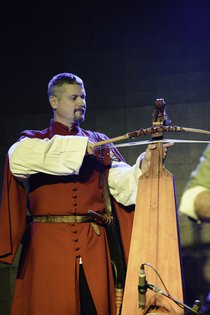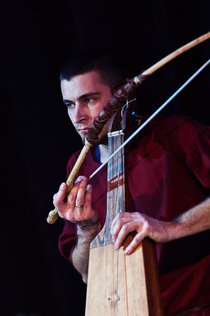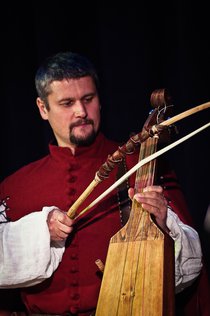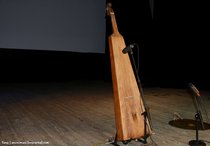Tromba marina
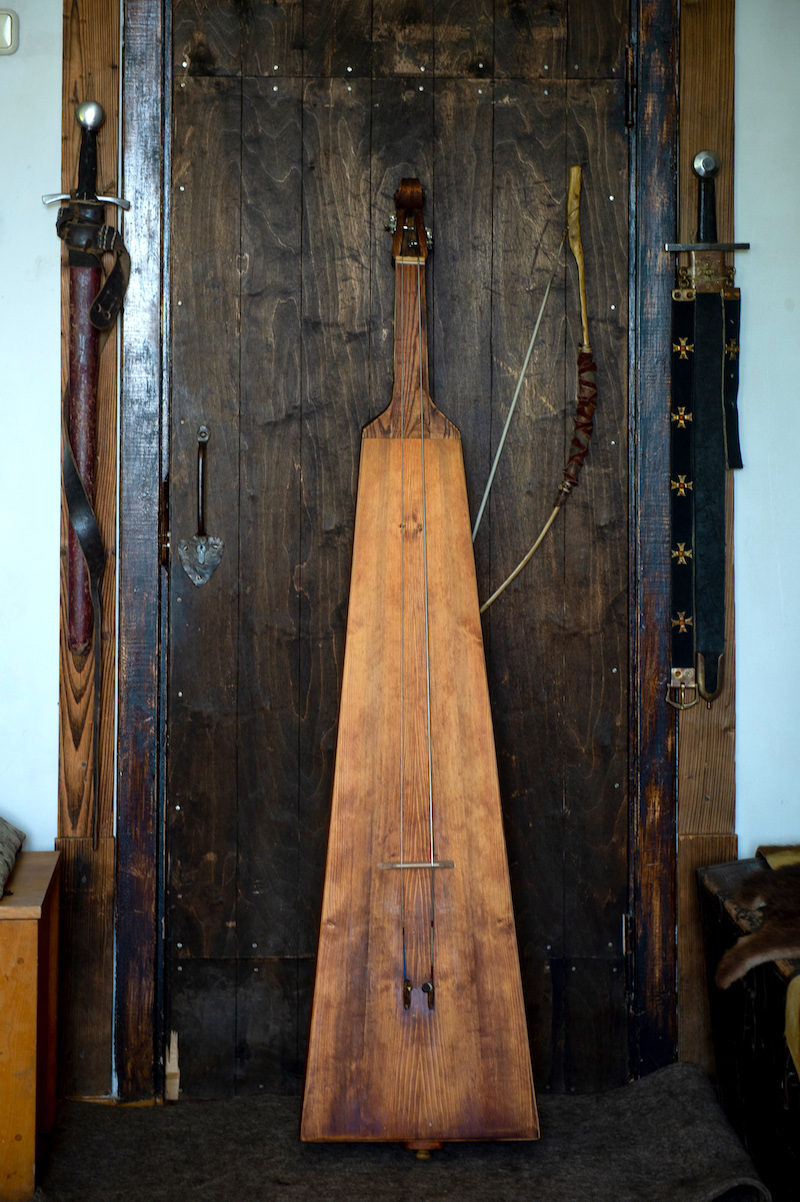
A tromba marina (Ger. Marientrompete, Trompetengeige, Nonnengeige or Trumscheit) is a West European triangular bowed string instrument without frets. It was highly popular in the 15th century in England and survived into the 18th century in different modifications. The tromba marina consists of a body and short neck in the shape of a truncated cone resting on a triangular base. It is usually four to seven feet long. Its name comes from its trumpet like sound due to the unusual construction of the bridge, and the resemblance of its contour to the marine speaking-trumpet of the Middle Ages.
The body of the marine trumpet is generally either three sides of wood joined in an elongated triangle shape with a pegbox at the apex; or a body of three to six ribs, a frontal soundboard, and a distinguishable neck. In most cases the bottom end of the instrument is open; some historical models use sound-holes. The single string attaches at the soundboard and passes over one foot of the bridge, leaving the other foot to vibrate freely on a plate of ivory or glass set into the soundboard, creating a brassy buzz. From its curiously irregular shape, the bridge was also known as the shoe; it was thick and high at the one side on which rested the string, and low and narrow at the other which was left loose so that it vibrated against the belly with every movement of the bow.
The measurements of the tromba marina varied considerably, as did the shape of the body and the number of strings. An octave string, half the length of the melody string, and even two more, respectively the twelfth and the double octave, not resting on the bridge but acting as sympathetic strings, were sometimes added to improve the timbre by strengthening the pure harmonic tones without increasing the blare due to the action of the bridge. The tromba marina of Stary Olsa band has trapezoidal body and 2 strings (D and G). It made by Belarusian master Valery Zinkevich in 2009.
In Germany, at the time when the trumpet was extensively used in the churches, nuns often substituted the tromba marina because women were not allowed to play trumpets – hence the name Nonnengeige (literally, nuns' violin).
There are no precise iconographic sources in Belarus, but there are images of closely related instruments – hudok (gudok) and basetlia (a folk instrument similar to the violoncello).
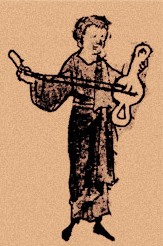 A musician plays the hudok, a fragment of the miniature David plays, scribes write, and people blow , Explanatory Psalter , early 16th c., Viĺnia School
A musician plays the hudok, a fragment of the miniature David plays, scribes write, and people blow , Explanatory Psalter , early 16th c., Viĺnia School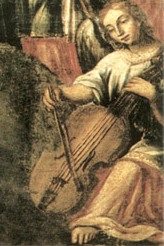 A musician plays the basetlia, a fragment of the Belarusian icon of the 18th c. The Virgin Mary with a choir of angels
A musician plays the basetlia, a fragment of the Belarusian icon of the 18th c. The Virgin Mary with a choir of angels